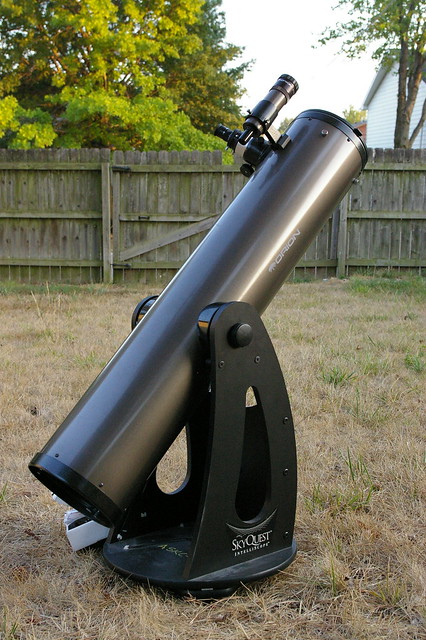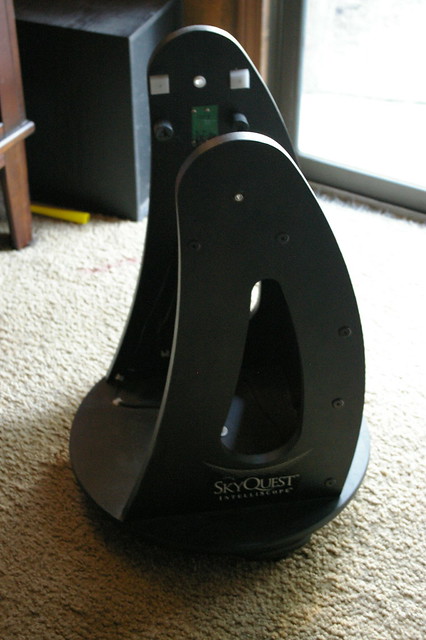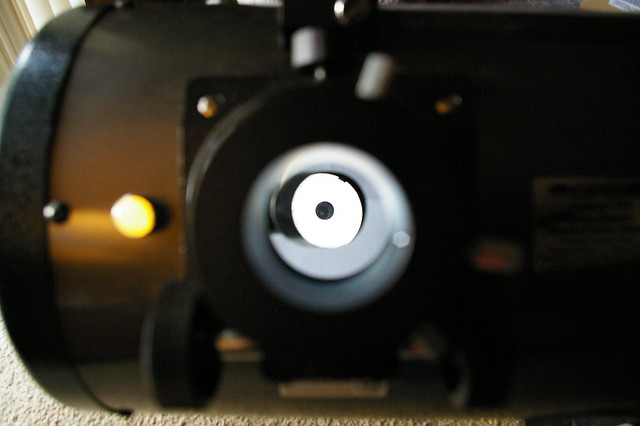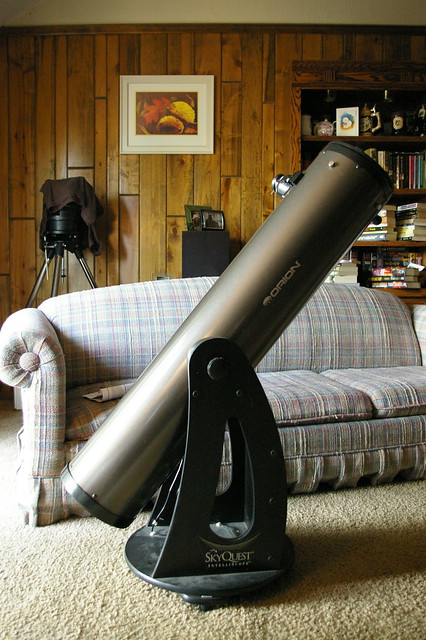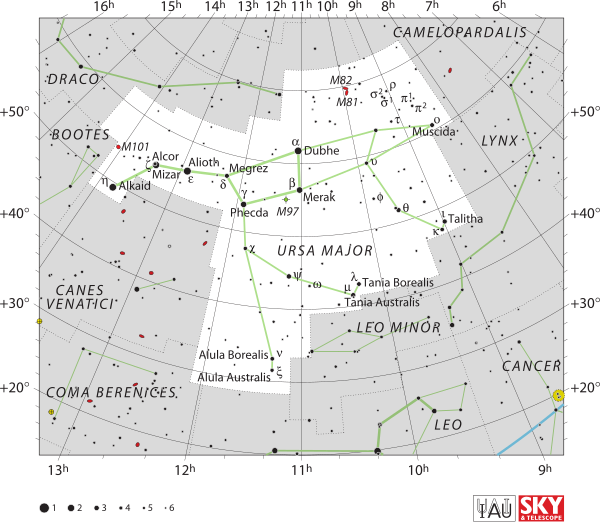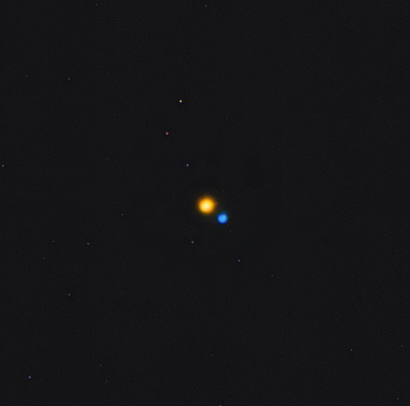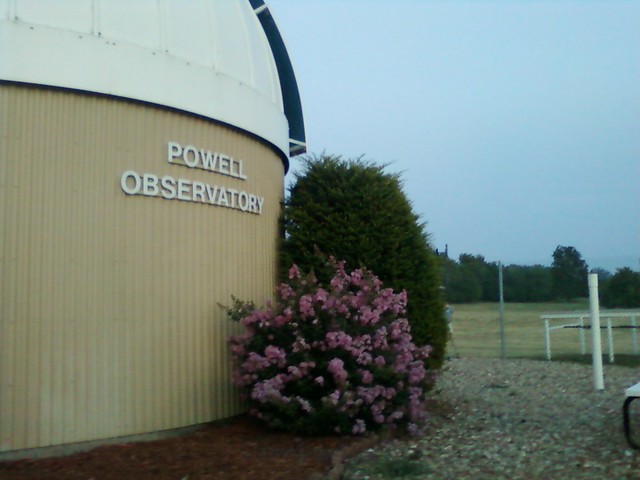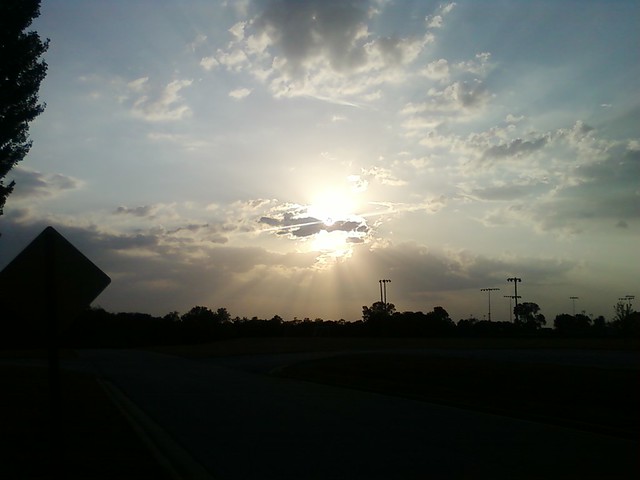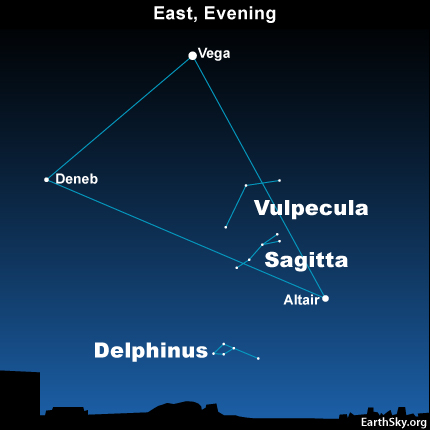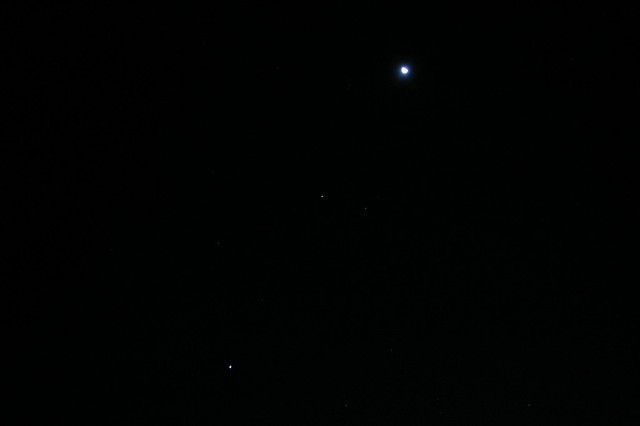
Very early Friday morning, I caught the waning moon approaching Jupiter and Aldebaran. You could draw a line from Venus to Moon and cross over or near Jupiter. The skies were clear and should stay clear throughout the day and into the night, with a forecasted high in the mid-80s, twenty degrees below what we’ve been experiencing for the past several weeks.
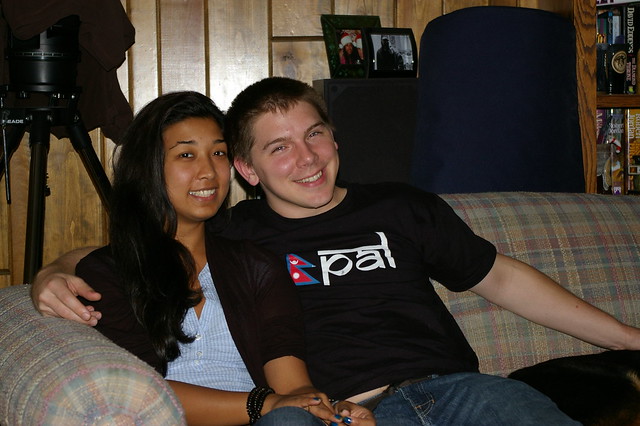 Friday at work was a whirlwind of meetings, including one held off site at another local law firm. I got home a bit early because one of my vanpool riders took the day off, but within fifteen minutes of getting home, my son and daughter-in-law arrived from their all-day road trip from North Texas. We visited with them for an hour and half, when they left to drive into Kansas City to spend the evening with several of their friends who still live in the area.
Friday at work was a whirlwind of meetings, including one held off site at another local law firm. I got home a bit early because one of my vanpool riders took the day off, but within fifteen minutes of getting home, my son and daughter-in-law arrived from their all-day road trip from North Texas. We visited with them for an hour and half, when they left to drive into Kansas City to spend the evening with several of their friends who still live in the area.
Terry cooked an excellent southern comfort food type dinner of chicken-fried minute steaks, organic green beans with turkey bacon, mashed potatoes and home-made white gravy. Too bad the kids didn’t hang around long enough to chow down with us. Terry and I let our food digest a bit, watching the Olympics until the skies darkened enough for some star gazing.
I grabbed the XT8 (affectionately known as ‘Dob’) and carefully carried it out to the lower backyard. This time I took a small table to put my charts on. I set my case of eyepieces on the ground. I brought out the Intelliscope handheld device to attempt an alignment. This device, unlike my ETX-90’s AutoStar, is only used to identify objects, not ‘go to’ them (since the XT8 does not have any motors). The Intelliscope can help you find objects with a warm/cold kind of seeking system. I still haven’t bought a stool to lean against, so my back aches a bit this morning. I did a two star alignment, finding and centering Arcturus first, then Vega.
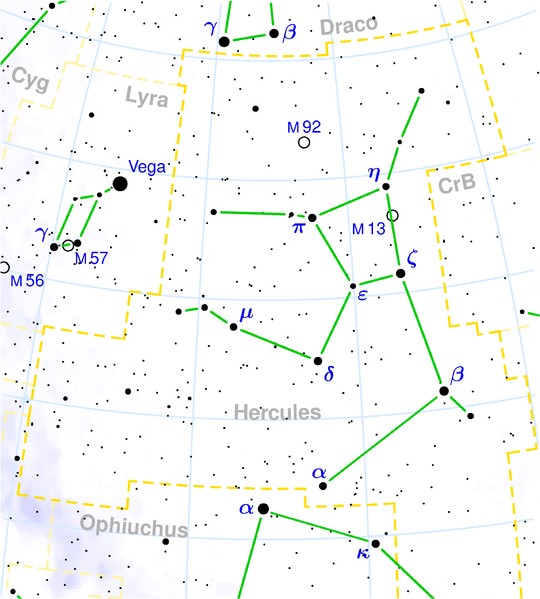 I wanted to revisit the Double Double in Lyra to both confirm that I could find it by star hopping and to attempt to see the double within the double. I asked the Intelliscope to ID what I had centered in the eyepiece and it claimed I’d found the Crab Nebula. Hmmm. That’s in the constellation Taurus, which isn’t visible until early morning hours in the east. I must have done something wrong in the alignment process. I powered off the Intelliscope device and made a note to myself to re-read the manual in the morning. Since I’d already found Vega, I spent several minutes comparing my star atlas to what I was seeing in the finderscope. I found Epsilon Lyrae and observed it with 26mm, 15mm, 9mm and a 2x barlow (using the 26mm and 15mm). Despite the apparent clearness of the skies, I did detect some haziness and thin stratus clouds overhead. That may have inhibited my ability to split the doubles within the doubles.
I wanted to revisit the Double Double in Lyra to both confirm that I could find it by star hopping and to attempt to see the double within the double. I asked the Intelliscope to ID what I had centered in the eyepiece and it claimed I’d found the Crab Nebula. Hmmm. That’s in the constellation Taurus, which isn’t visible until early morning hours in the east. I must have done something wrong in the alignment process. I powered off the Intelliscope device and made a note to myself to re-read the manual in the morning. Since I’d already found Vega, I spent several minutes comparing my star atlas to what I was seeing in the finderscope. I found Epsilon Lyrae and observed it with 26mm, 15mm, 9mm and a 2x barlow (using the 26mm and 15mm). Despite the apparent clearness of the skies, I did detect some haziness and thin stratus clouds overhead. That may have inhibited my ability to split the doubles within the doubles.
 I hopped over to Albireo in Cygnus, just to make sure I could find it again without referring to my star atlas. I used a trick I had read about from some artists who do astronomical sketching where you defocus the stars, especially doubles, to discern their different colors. I did this while observing Albireo and I could clearly see the red and blue for each star in the double. I stretched my back for a few minutes and stared off to the northeast, at Cassiopeia, which I could clearly see as a distinctive ‘W’ shape. I could not see the constellation Perseus, but I did see one or two meteors radiating from the space between Cassiopeia and where Perseus should have been visible (but wasn’t because of the haze and light pollution from the prison just north of my location).
I hopped over to Albireo in Cygnus, just to make sure I could find it again without referring to my star atlas. I used a trick I had read about from some artists who do astronomical sketching where you defocus the stars, especially doubles, to discern their different colors. I did this while observing Albireo and I could clearly see the red and blue for each star in the double. I stretched my back for a few minutes and stared off to the northeast, at Cassiopeia, which I could clearly see as a distinctive ‘W’ shape. I could not see the constellation Perseus, but I did see one or two meteors radiating from the space between Cassiopeia and where Perseus should have been visible (but wasn’t because of the haze and light pollution from the prison just north of my location).
I returned to the scope and began a star hop around Lyra in search of M57, also known as the Ring Nebula. This was a test, for me, not only of my ability to find this fuzzy smoke ring, but also of an 8-inch telescope’s ability to cut through the obstacles inherent at my closest observing site (my backyard). I surprised myself. I found the nebula, quicker than I thought I would, and I even saw it through the finderscope. It probably helped that Lyra was almost straight up above me and the telescope, meaning I had less atmosphere to peer through. Using averted vision, with the 9mm, I could clearly see the ring. I used the background stars to focus, because you can’t really focus well on a smudge that’s fuzzy and faint.
Since I found and saw a nebula with the XT8, I wanted to see if I could find a globular cluster next. And I just happened to know where one was. M13 in the ‘armpit’ of Hercules (see chart above) happened to be overhead, somewhere between Altair and Arcturus. I had some trouble locating the stars that make up Hercules with my naked eye. I took several minutes, stretching my back, to peer overhead, but towards the west, and Arcturus. Eventually, the star dots connected in my mind’s eye and I found the constellation. I oriented the XT8 to the general vicinity where I thought M13 would be. I think I saw it through the finderscope, although I can’t remember specifically. Using the 26mm eyepiece, I centered the globular cluster in my field of view and proceeded to observe this large dense cluster for several minutes with various magnifications.
 I stared off into the northeast again, still trying to find Perseus and also Pegasus. If I could see the Andromeda Galaxy (also known as M31), I would achieve a triple crown of astronomical observing from my backyard with the XT8 (1: nebula; 2: globular cluster; 3: galaxy). I spent nearly a half an hour, roaming around my backyard, changing my point of view and line of sight to the northeast and east. I found Cepheus, but no matter how hard I squinted or averted my eyes, I could not clearly identify the box that makes up the body of Pegasus. Frustrated, and with an aching back, I decided to call it a night at about half past eleven o’clock.
I stared off into the northeast again, still trying to find Perseus and also Pegasus. If I could see the Andromeda Galaxy (also known as M31), I would achieve a triple crown of astronomical observing from my backyard with the XT8 (1: nebula; 2: globular cluster; 3: galaxy). I spent nearly a half an hour, roaming around my backyard, changing my point of view and line of sight to the northeast and east. I found Cepheus, but no matter how hard I squinted or averted my eyes, I could not clearly identify the box that makes up the body of Pegasus. Frustrated, and with an aching back, I decided to call it a night at about half past eleven o’clock.
I returned the telescope to the band room and replaced all the dust caps. I hugged my hubby, for he had brought me a refreshing freshly made strawberry lemonade to enjoy while bending over the telescope for hours. Off to bed and sleep, at least until the dogs started barking when Derek and Royna returned home (sometime after midnight and before five – not exactly sure as I tried to sleep through the commotion).
My alarm only fires off on weekdays, but most days I wake up fifteen minutes early. Not Saturday morning though. When I cleared the sleep from my eyes and checked the clock on my cell phone, it read 5:45 a.m. and I could already tell the eastern horizon was brightening. I grabbed the tripod and camera and went out to the driveway to take a photo of the Moon approaching Jupiter.
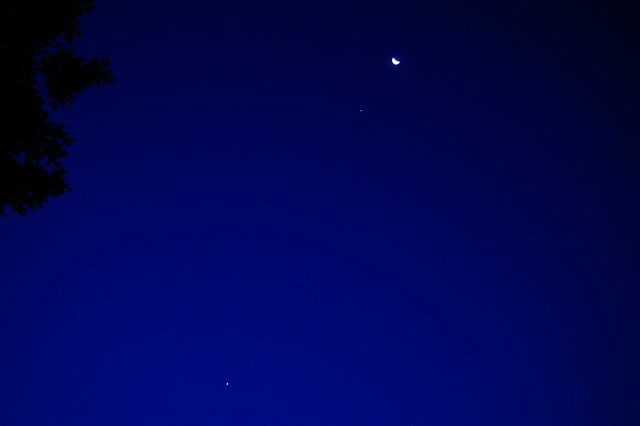
If I happened to live in the Pacific, today I would be able to observe the moon occulting Jupiter. But I won’t be too disappointed, since I can observe the moon occulting Venus next Monday afternoon, between 3:00 and 4:00 p.m. I plan to take a pair of binoculars and my camera equipment with me to work. I will setup on the top of the parking garage and hope I have a clear line-of-sight through the buildings to the west to see the occultation as it occurs.
 But tonight I plan to find a dark sky location and take in as many meteors as I can, raining down from Perseus. I better take a nap this afternoon and set an alarm for one o’clock Sunday morning. Don’t want to miss the best meteor show of the year!
But tonight I plan to find a dark sky location and take in as many meteors as I can, raining down from Perseus. I better take a nap this afternoon and set an alarm for one o’clock Sunday morning. Don’t want to miss the best meteor show of the year!

